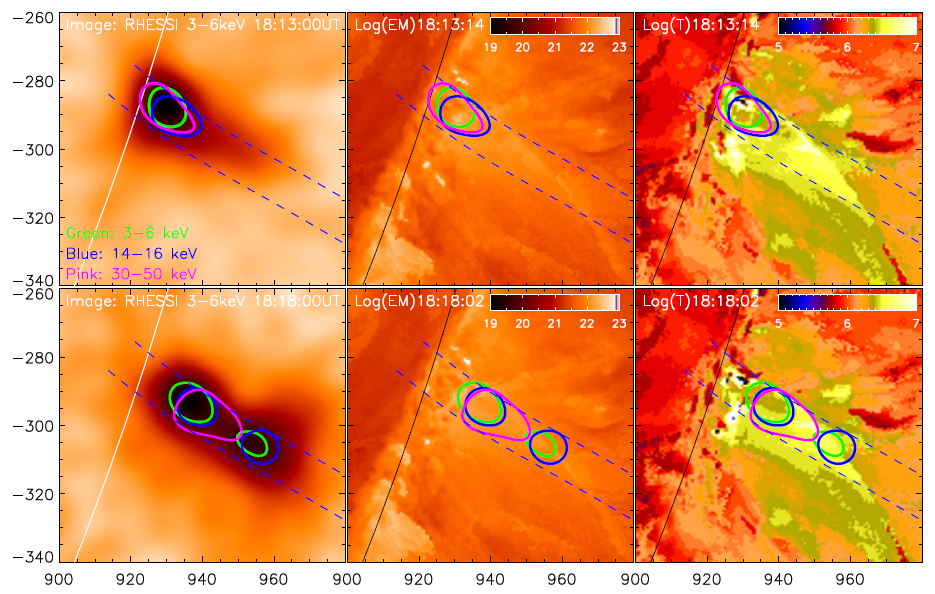We have explored the spatial appearance of the upper coronal source in a solar flare observed by the RHESSI and SDO/AIA on 8March 2011. This event occurred at the limb with completely occulted the footpoints. Both the loop-top and the upper coronal sources are well observed by RHESSI in X-rays.The upper coronal source appears later (about two minutes) than the loop-top source, and the RHESSI X-ray spectral analysis shows that both sources have a temperature of 30 MK. AIA observations show the counterparts in the ultraviolet (UV), and bidirectional outflows appear between AIA brightenings. The loop-top source seems to be located at the top of a hot and dense loop system, which expands with a speed of 10 km/s, while the upper coronal source moves faster upward with a speed of about 32 km/s in the same time interval. The analysis of the spatial distribution of the emission measure and temperature indicates that the hot plasma itself or the heating region are possibly moving upward from the lower coronal region where the loop-top source appears, which results into the upper coronal source appears later than the loop-top source. Our findings are consistent with the model that the magnetic reconnection current would be located between these two X-ray sources. 
Figure 1 Left: RHESSI 3 – 6 keV images at two times 18:13:00 UT (upper) and 18:18:00 UT (bottom).Central and right panels: EM and T images with the X-ray contours at 3 – 6 keV (green), 14 – 16 keV (blue), and 30 – 50 keV (pink). Two blue dashed lines outline the artificial slit connecting the loop-top and upper coronal sources . This work by NING Zongjun has been published in Solar Physics. Plese see Solar Physics Vol.291 No.6 (2016) for more detail: http://apps.webofknowledge.com/full_record.do?product=WOS&search_mode=GeneralSearch&qid=2&SID=N1AWCws2VYoPhLAXSbx&page=1&doc=22 |
